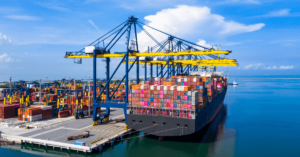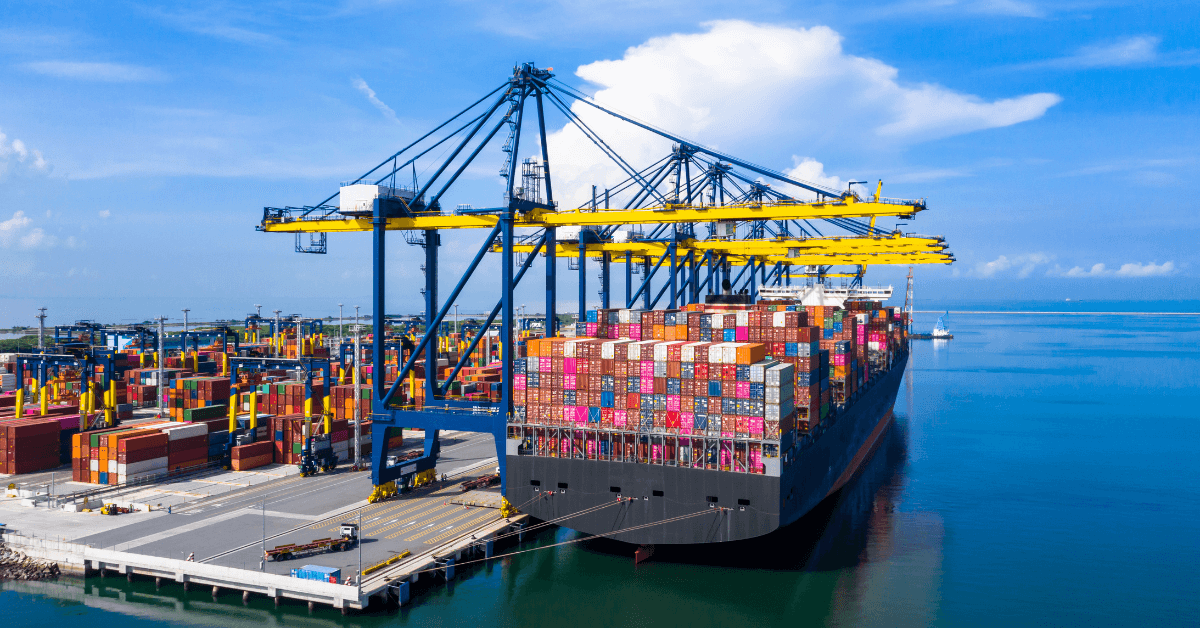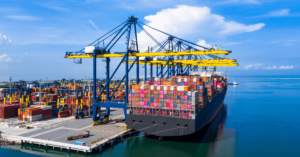
Video: Fire Erupts Aboard World’s Largest Short-Sea RORO Ship
April 18, 2025
Watch: Indian Crew Stuck Without Pay Onboard Offshore Vessel Pleads For Help
April 18, 2025

The United States has announced a revised plan to impose port fees on Chinese-built and owned ships, scaling back an earlier, more aggressive proposal after facing backlash from the global shipping industry.
In a Federal Register notice posted Thursday, the US Trade Representative (USTR) outlined a new fee structure that will go into effect from October 14, 2025 and be phased in over three years.
The revised rules eliminate the previously proposed flat fee of up to $1.5 million per port call, replacing it with a tiered system.
Chinese-built and owned ships will be charged $50 per net ton, with the rate increasing by$30 annually for three years.
Alternatively, fees may be calculated per container, starting at $120 and rising to $250.
Chinese-built ships owned by non-Chinese entities will face a lower rate-$18 per net ton, rising by $5 annually over three years.
Fees will be applied once per voyage and capped at six times per year for affected ships.
The USTR exempted several categories from the fees:
- Ships transporting goods between US ports or to US territories and Caribbean islands
- US and Canadian vessels operating in the Great Lakes region
- Empty vessels arriving to load American exports such as wheat and soybeans.
Both the Biden and Trump administrations have discussed the strategic need to rebuild the domestic maritime industry, citing national security and economic stability.
“Ships and shipping are vital to American economic security and the free flow of commerce,” US Trade Representative Jamieson Greer said. “This action sends a strong demand signal for US-built ships.”
A second phase of the policy will focus on favouring US built LNG ships over a 25 year period, beginning in 2028.
The original fee proposal had alarmed global carriers, who warned that the charges could drastically increase shipping costs and make US exports less competitive.
Shipping companies like MSC and Maersk had said the flat fees would quickly add up, as their vessels typically call at multiple US ports per voyage.
China, for its part, condemned the US decision. Beijing’s Foreign Ministry said that this would raise shipping costs, disrupt global trade, and fuel inflation in the United States, arguing it would ultimately fail to revive the US shipbuilding industry.
Trump has already raised tariffs on Chinese goods to a combined 145%, while China retaliate with duties of up to 125% on American products.
The USTR is also considering a 100% tariff on Chinese-made port equipment, such as ship-to-shore cranes and chassis.
Trade analysts say the tariffs and port fees are already disrupting global shipping routes.
Cargo originally headed for US ports is now being rerouted to Europe and the UK, leading to rising imports and congestion at ports like Felixstowe, Rotterdam and Barcelona.
Economists warn that continued trade disruptions could result in higher costs for American consumers, pressurise global supply chains and strain transatlantic shipping capacity.
References: Reuters, BBC
Source: Maritime Shipping News


